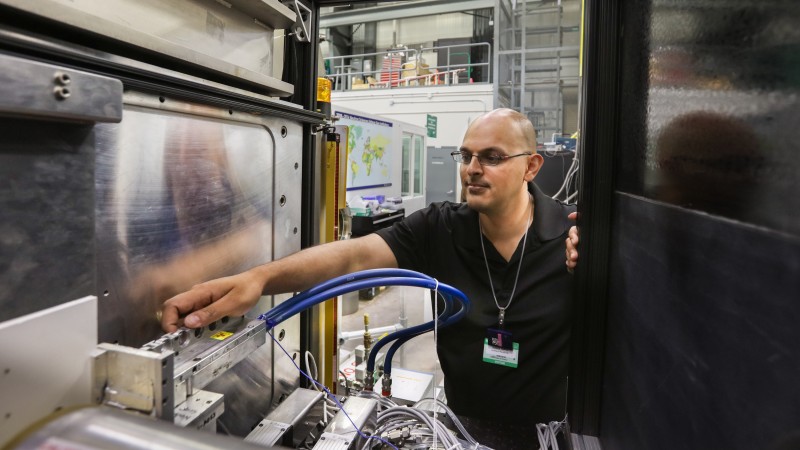Human immunodeficiency virus (HIV) is a quick learner. As fast as researchers get effective anti-viral drugs into clinical trials, the virus evolves, deploying potent resistance mutations that render the medicine useless and put researchers back at square one.
Kushol Gupta hopes to beat HIV’s defenses. A research assistant professor from the University of Pennsylvania’s Perelman School of Medicine, Gupta recently concluded an experiment at the Department of Energy’s (DOE’s) Oak Ridge National Laboratory (ORNL) he hopes will improve allosteric inhibitors of integrase (ALLINIs), a new class of HIV-fighting drug that inhibits the virus’s ability to reproduce.
“If we can stay two steps ahead of the virus by anticipating the mechanisms it uses to defend itself, we can create more effective drugs in the long haul,” Gupta said.
Gupta explains that the integrase enzyme—which incorporates the virus’s DNA into healthy cells—works only as a solitary molecule. When bound with an ALLINI, the enzyme is forced to stick together with other copies of integrase until it can no longer function.
“ALLINIs cause the aberrant polymerization of integrase, in such a way that it can’t function as it normally does during the viral life cycle,” he said.
His project was part of a new collaboration between ORNL and Brookhaven National Laboratory (BNL). In conjunction with data gathered from the Life Science X-ray Scattering beamline at BNL’s National Synchrotron Light Source II, Gupta used the Biological Small Angle Neutron Scattering instrument, or Bio-SANS, beamline CG3, at ORNL’s High Flux Isotope Reactor (HFIR) to investigate the mode of action, or how HIV evolves to combat ALLINIs.
“The specialized resource here at Oak Ridge is one of the few in the world where you can capture a lot of information across a lot of scattering angles simultaneously,” Gupta said, explaining that neutron scattering allows him to observe interactions between HIV and ALLINIs in a unique and comprehensive way.
Because neutrons are highly penetrating and nondestructive, they are powerful probes for studying thick, soft matter materials such as the ones Gupta is investigating.
“What we’ve been able to do using these techniques is dissect the transition of the protein. With this information, we get a comprehensive view of how the protein is changing and how the drug is intervening at very particular steps,” he said.
Although ALLINIs are only in the first phase of clinical trials, there have already been several cases of ALLINI-resistant strains of HIV in the lab setting.
“Now that we have a better understanding of the drug’s mode of action, we can better correlate different chemotypes—different chemical scaffolds in the drugs being developed—to the desired effects,” Gupta said. “That will guide us to drugs that not only very efficiently achieve those effects, but also ones that can navigate around and avoid the resistance mutation problem altogether.”
HFIR is a DOE Office of Science User Facility. UT-Battelle manages ORNL for the DOE’s Office of Science. The Office of Science is the single largest supporter of basic research in the physical sciences in the United States and is working to address some of the most pressing challenges of our time. For more information, please visit http://science.energy.gov/.—by Gage Taylor








